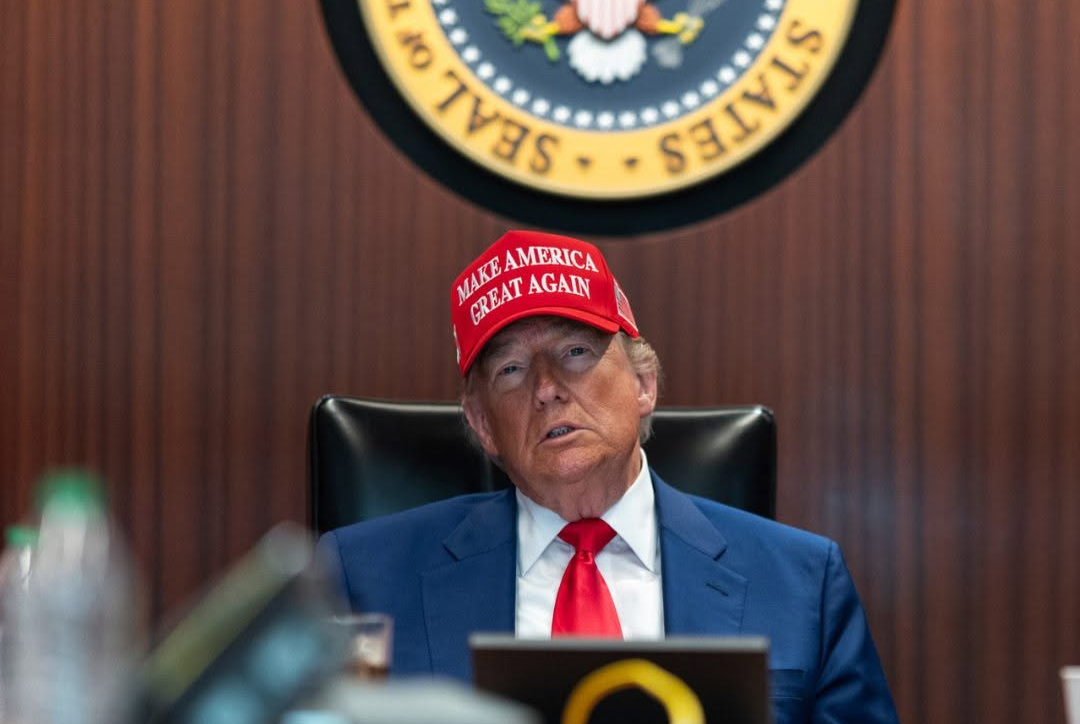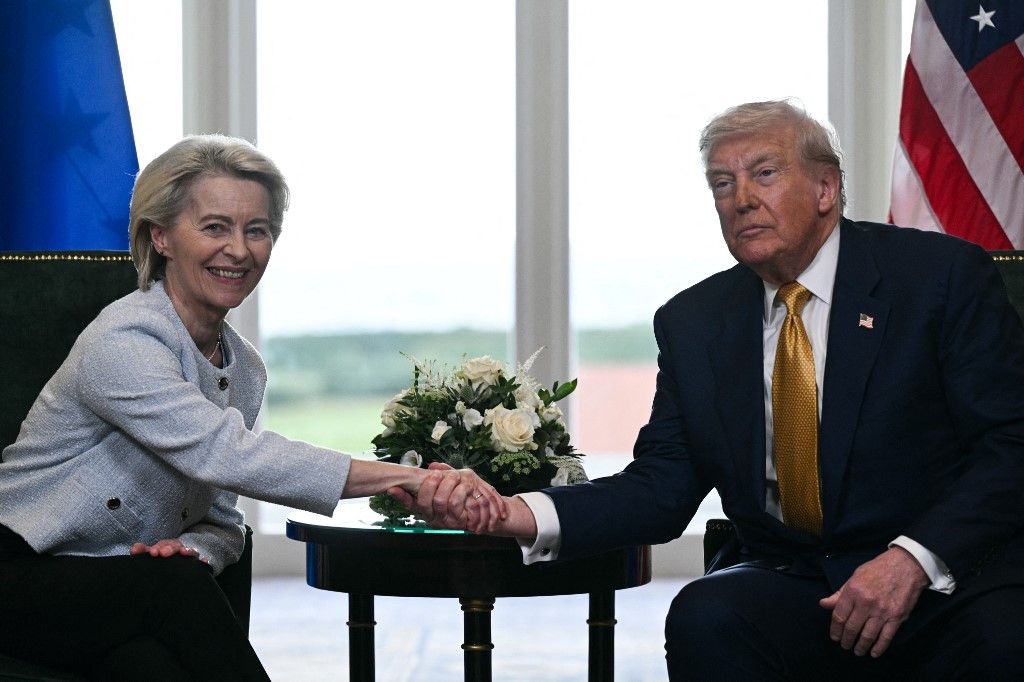US-EU Deal: €1 Trillion Trade Redefined Amidst New 15% Tariff Reality
A seismic shift in transatlantic commerce is underway following the announcement of a new trade agreement between the United States and the European Union. Finalized on Sunday, July 27th, just days before a critical August 1st deadline, the deal marks a turning point in years of escalating tariff disputes. It offers crucial clarity for investors and businesses—though not every sector is walking away satisfied.

Donald Trump
Does the United States Have a Trade Agreement with the EU, and Why Now?
As of July 2025, the U.S. and EU now have a formal trade agreement that restructures key tariffs and redefines trade priorities between the two global economic blocs. This new, comprehensive framework represents the broadest bilateral trade accord between the regions in over a decade {1}.
The immediate catalyst for this breakthrough was the looming August 1st deadline set by the U.S. administration, threatening to impose a 30% blanket tariff on EU imports if no deal was reached {1, 2}. This new agreement, struck in Scotland between U.S. President Donald Trump and European Commission President Ursula von der Leyen, averts that potential trade war. It replaces the looming higher duties with a standardized 15% tariff on the vast majority of EU exports to the U.S., a significant reduction from the threatened 30% and the prior 20% blanket levy that had been in place since April {1, 2}. This provides much-needed predictability for businesses, a critical win for capital markets and corporate strategy alike {5}.

President Ursula Von Der Leye and President Donald Trump
Who Is the EU’s Biggest Trading Partner, and What's the Scale of Trade Impacted?
As of 2025, the United States is firmly established as the European Union’s largest trading partner, having surpassed China in both exports and imports {2}. Total EU-U.S. trade now exceeds €1 trillion annually, encompassing everything from pharmaceuticals and machinery to food and digital services {2}.
This new trade deal is expected to further strengthen this already massive economic relationship. The 15% tariff applies to the vast majority of EU goods, impacting hundreds of billions of Euros worth of trade that had previously faced unpredictable and escalating duties {1, 2}. In a significant concession, the EU has also reportedly committed to purchasing $750 billion worth of U.S. energy (LNG, oil, and nuclear fuels) over three years, aiming to reduce dependence on Russian supplies, and committed an additional $600 billion in investments into the U.S. economy, alongside purchasing U.S. military equipment {1, 2}.
Related: Transatlantic Trade Shake-Up: EU and US Strike 15 % Tariff Deal to Avert Trade War
What’s in the Deal — And What Does It Mean for Different Sectors?
The agreement is a mixed bag, delivering certainty for some while leaving others in limbo.
Winners: Autos & Pharmaceuticals
European automakers such as Volkswagen, BMW, and Porsche are among the biggest winners. The new 15% tariff replaces the threatened 30% duty and the previous 25% on cars and car parts {1, 2}. This provides a more stable and manageable cost of doing business. The auto sector, which employs 13 million people in Europe, stands to benefit significantly, moving from a 27.5% effective tariff rate (25% duty plus 2.5% pre-existing levy) to a flat 15% {1, 5}. This change has already spurred a rally in European car stocks {5}.
The pharmaceutical and biotech sectors also welcomed the deal. While pharmaceuticals were initially a point of contention, the final agreement specifies "zero for zero tariffs" on certain generic drugs and semiconductor equipment, alongside aircraft and some chemicals {1, 2}. This exemption provides a highly stable outlook for profitability in a vital export sector like Ireland's pharmaceutical industry {4}.
Losers: Steel & Aluminum
Not all sectors benefited equally. The European steel and aluminum industries remain subject to the existing 50% U.S. tariff, with no immediate clear commitment on substantial reductions {2, 4}. While European Commission President Ursula von der Leyen indicated that a "quota system" would be put in place where the 50% tariff applies only once a certain limit is crossed, and further negotiations on "fighting a global steel glut" are planned, companies like ArcelorMittal and Hydro face continued pressure {1, 4}. German industry groups have voiced frustration, stating that even a 15% tariff "will have immense negative effects on export-oriented German industry," and that the lack of progress for steel and aluminum leaves them "in economic limbo" {4}.
Global Reactions: Who’s Happy and Who’s Not, and What Are the Broader Implications?
Supportive Leaders
U.S. President Donald Trump hailed it as "the biggest deal ever made" and "a good deal for everybody," emphasizing the mutual benefits {2, 3}. European Commission President Ursula von der Leyen praised the deal for bringing "stability" and "predictability" crucial for businesses on both sides of the Atlantic {1, 3}. German Chancellor Friedrich Merz welcomed the deal, stating it preserved "fundamental interests" and averted "an unnecessary escalation" for the export-oriented German economy {2, 4}.

Chancellor of Germany Fredrich Merz
Critical Voices
Beyond the German steel and aluminum industry's strong criticism, some EU lawmakers argued that the agreement gave away too much in the auto sector without gaining sufficient concessions in areas such as agriculture and comprehensive digital trade {2}. The Federation of German Industries expressed concern that the 15% tariff, while better than 30%, is still substantially higher than historical averages (around 1%) and will impose significant new costs {4}.
Still, the overall political tone remains cautiously optimistic. Many leaders view the deal as a strategic shift away from outright trade confrontation and toward a more managed form of economic alignment, particularly as global supply chains evolve and geopolitical risks remain high. Analysts suggest this renewed transatlantic alignment could also send a significant signal to other major economies, including China, regarding a united front on trade norms and practices.
Related: Trump’s Tariffs vs. Apple: Will Your Next iPhone Cost More?
Conclusion
The new U.S.-EU trade agreement is a landmark effort to stabilize and redefine one of the world’s most critical economic relationships. For automakers and pharmaceutical firms, it brings vital clarity and renewed momentum, significantly reducing the threat of a full-blown trade war. For steel and aluminum producers, it offers little immediate relief, though pathways for future negotiation are hinted at.
Markets are already responding positively to the reduced uncertainty, and policymakers are watching closely to see whether this deal can serve as a durable foundation for broader cooperation—or whether unresolved tensions will resurface. The deal highlights a global trend towards managed trade, where economic partnership is increasingly intertwined with strategic alignment in a volatile world.
Sources
{2} DW. "US and EU reach trade deal to avoid tariffs." July 27, 2025.
{5} Morningstar (Dow Jones). "European Auto Sector Gains on New U.S. Trade Pact." July 28, 2025.













